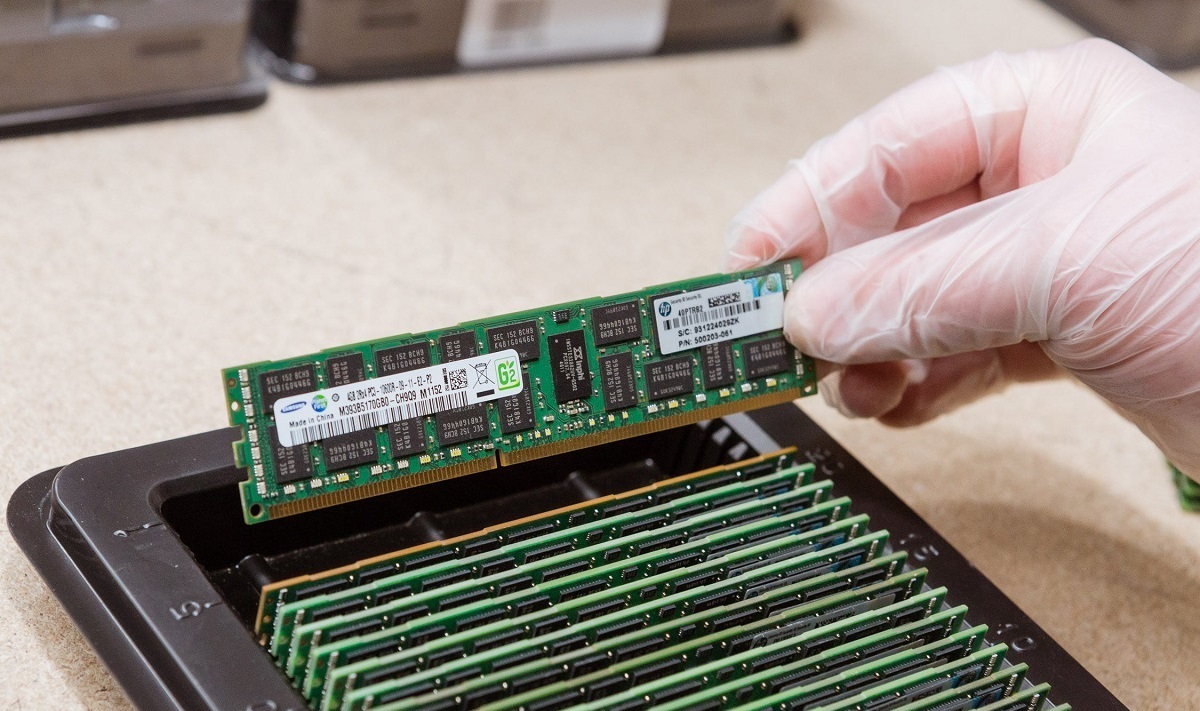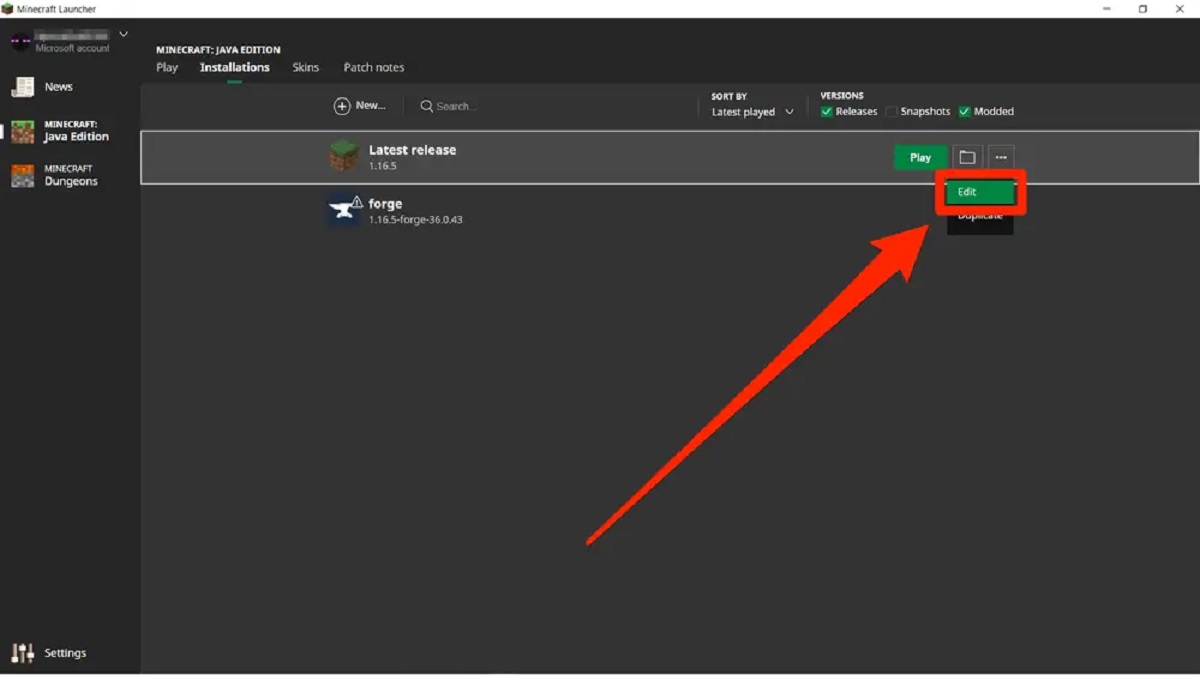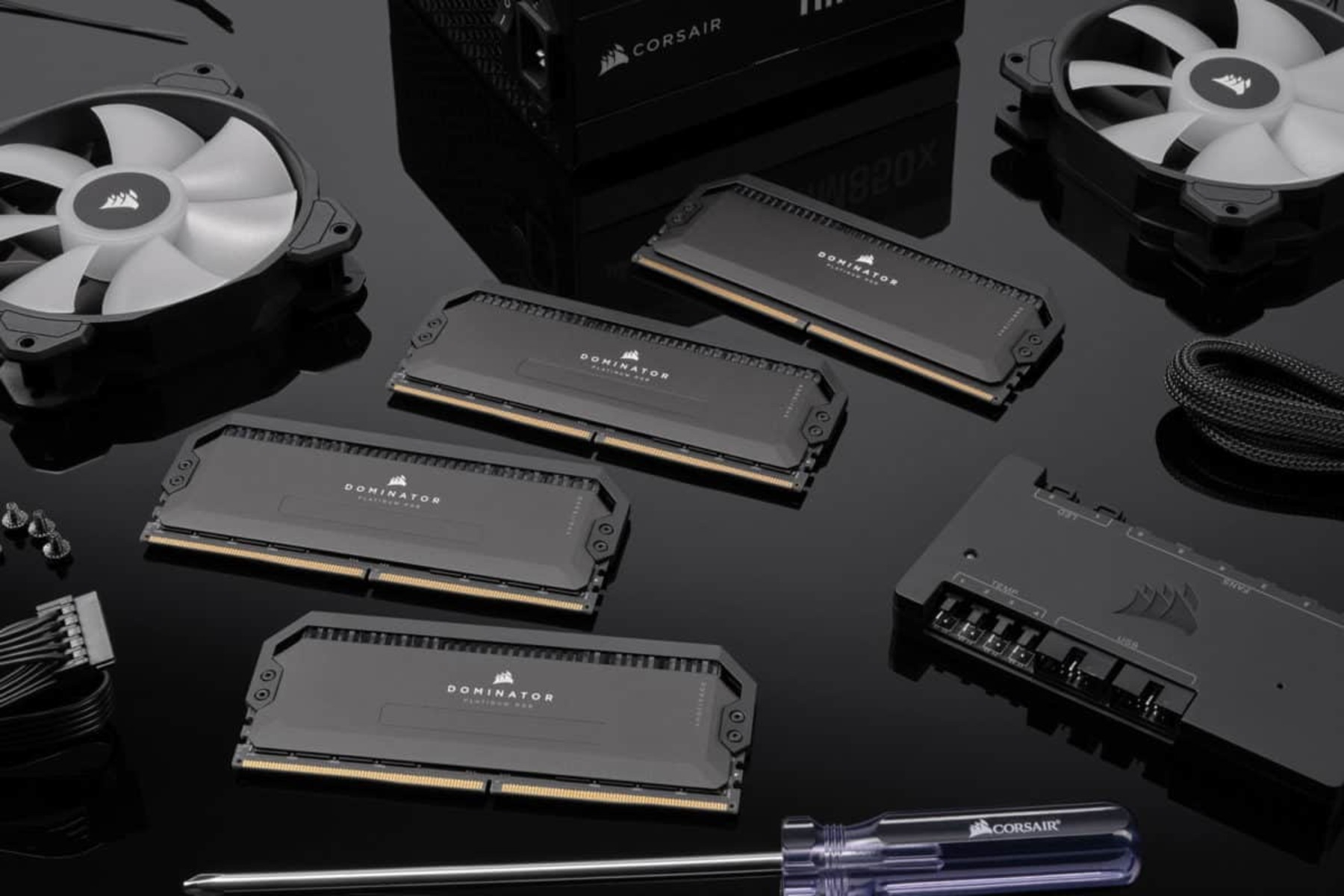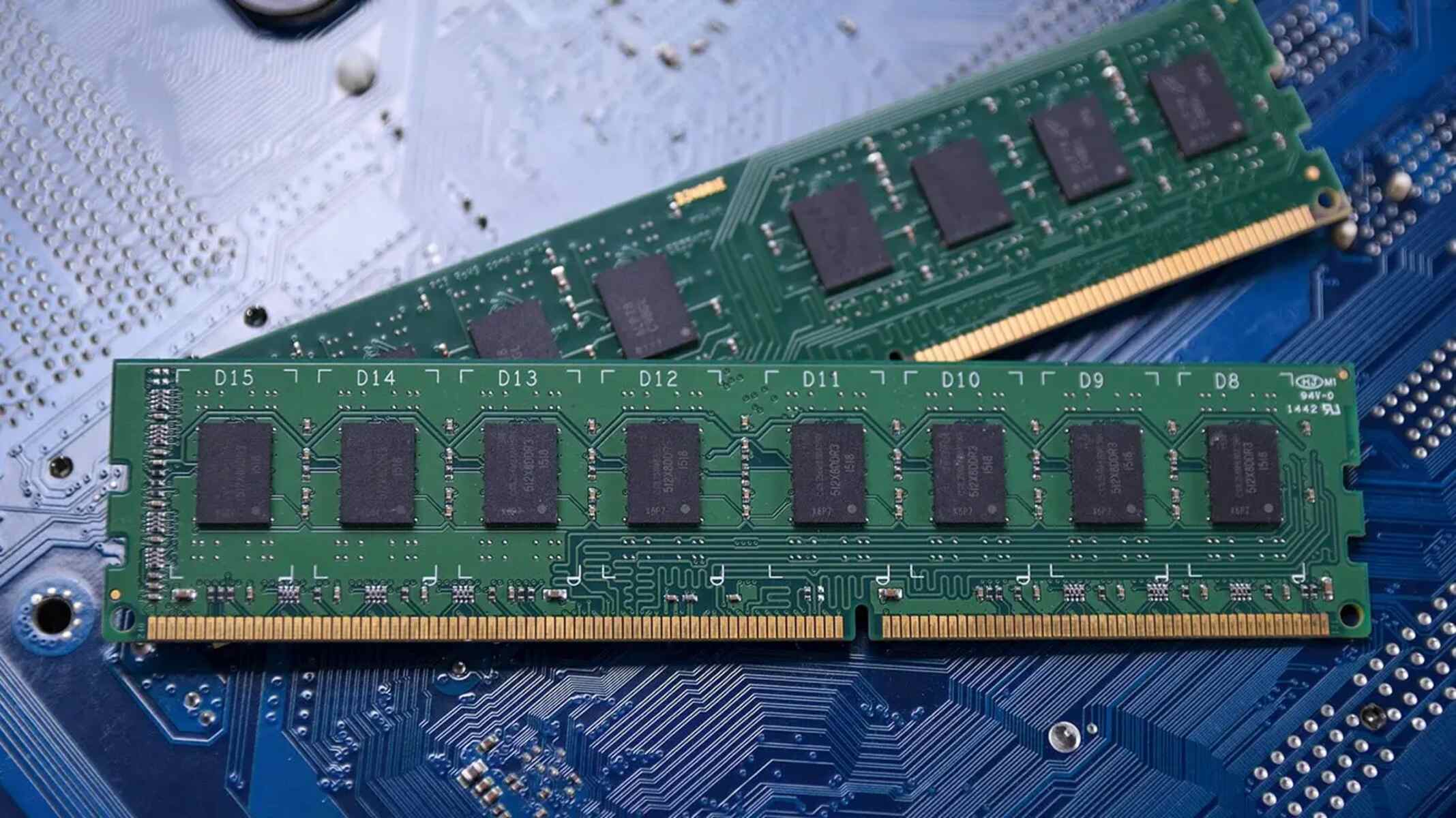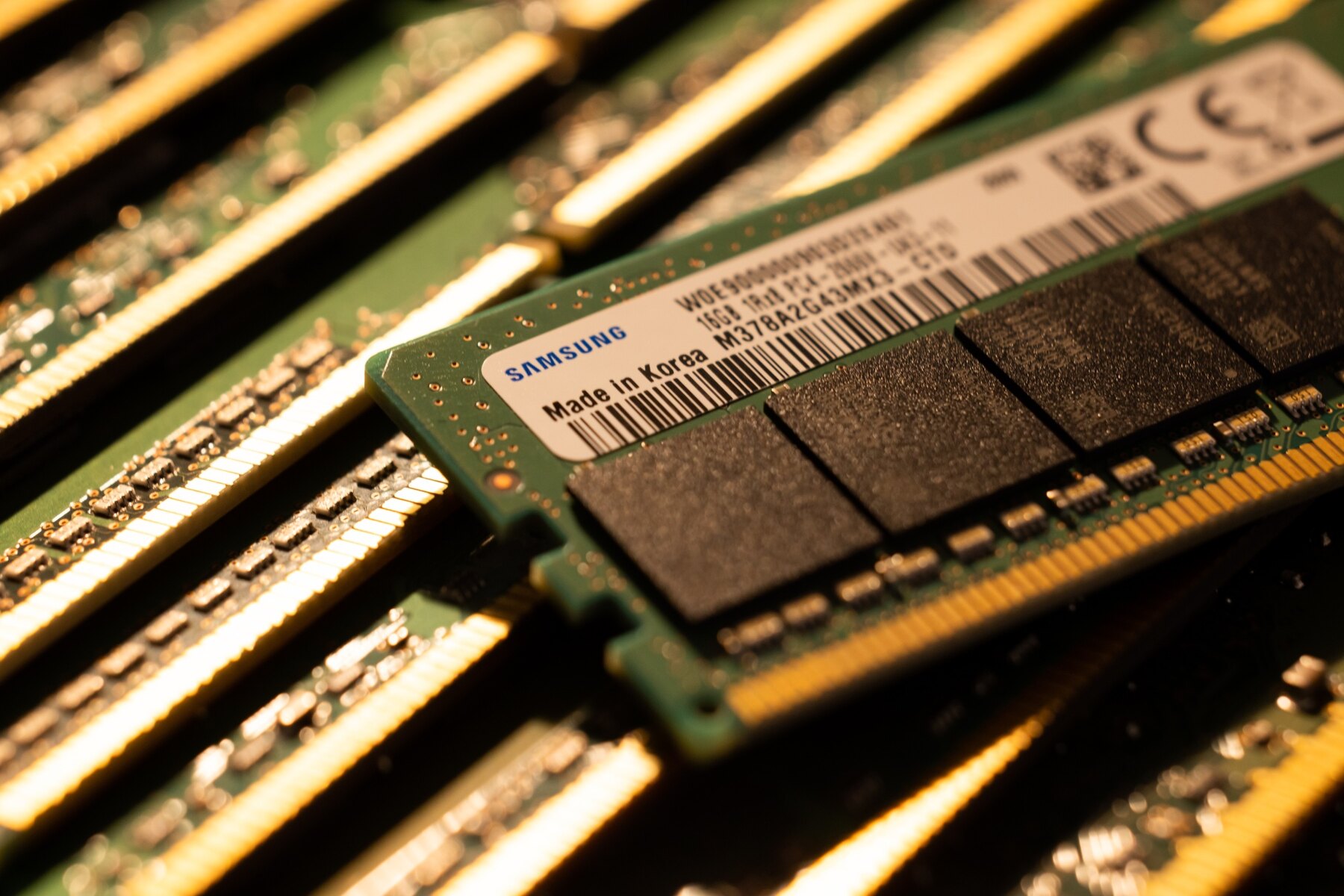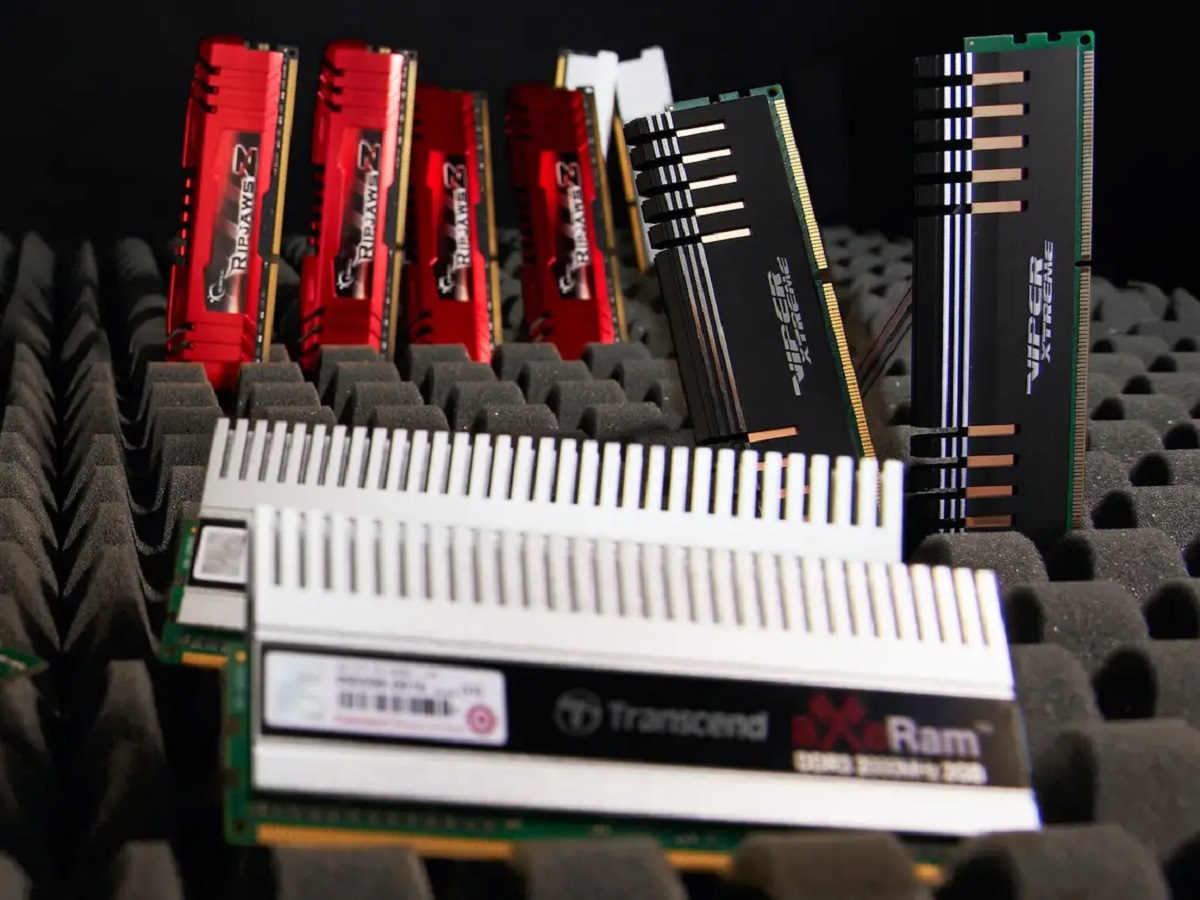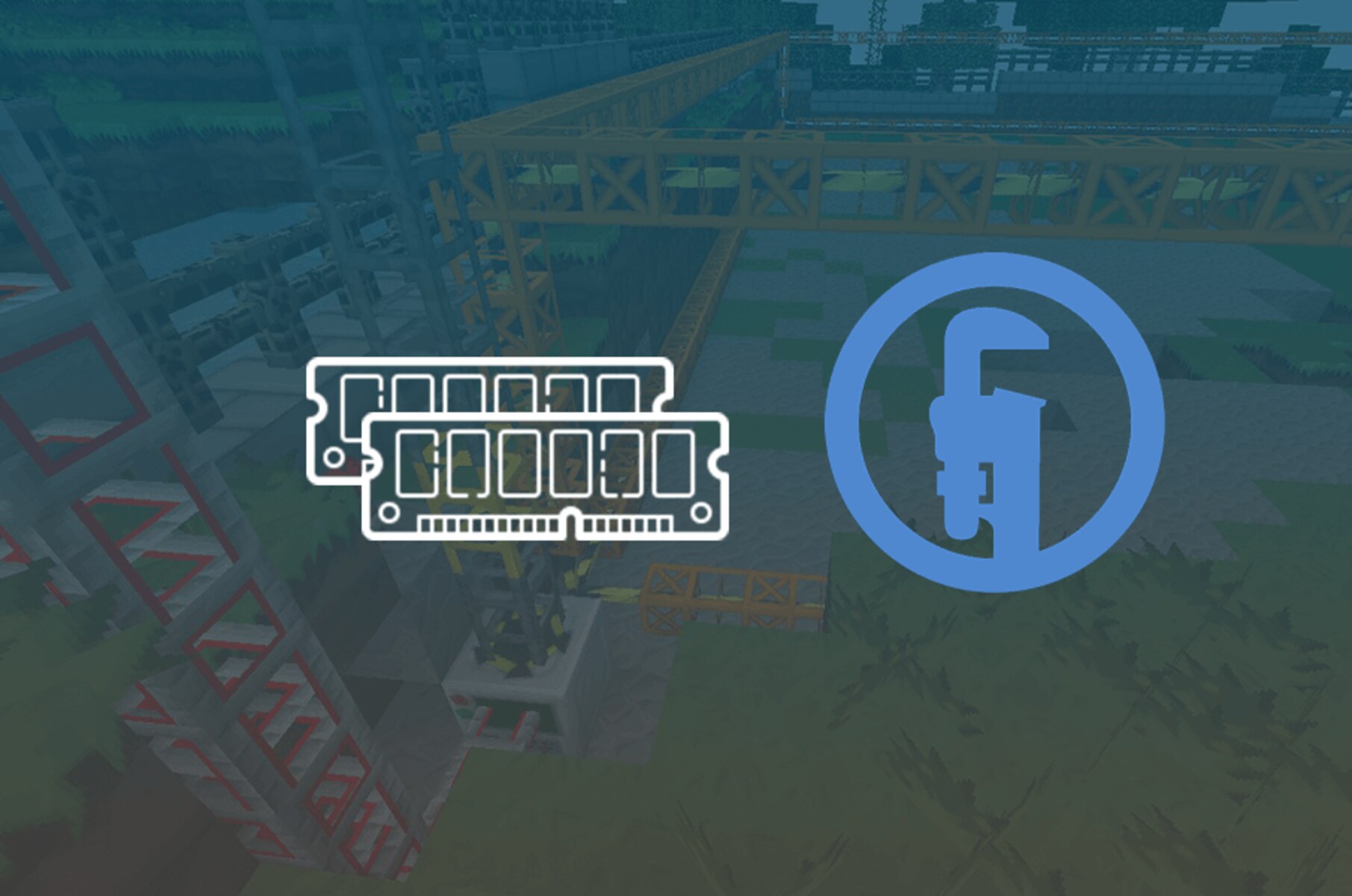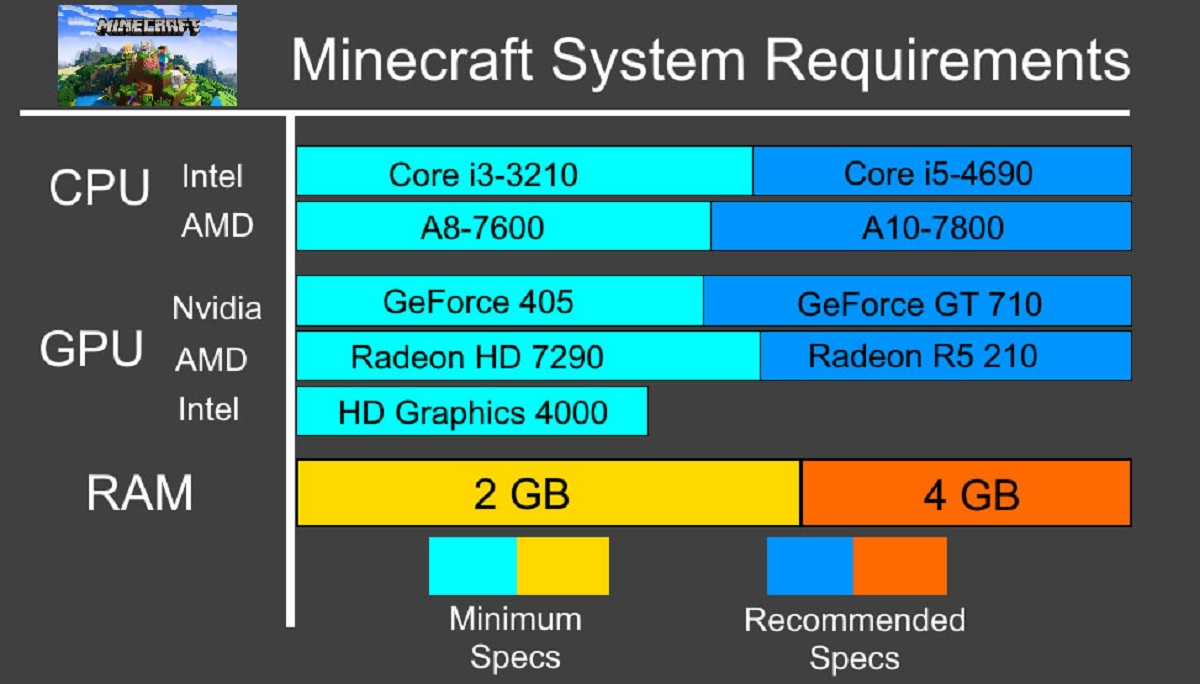Introduction
The amount of Random Access Memory (RAM) in a server plays a crucial role in the performance and efficiency of the system. RAM serves as the temporary storage for data and instructions that the server needs to access quickly. Essentially, it acts as the working memory for the server, enabling it to perform multiple tasks simultaneously.
In this article, we will explore the significance of RAM in server configurations and discuss the factors to consider when determining the appropriate RAM capacity. We will also delve into the different types of server workloads and provide recommendations on how much RAM should be allocated for each workload.
Understanding the correlation between RAM and CPU (Central Processing Unit) is another key aspect we will cover. While both RAM and CPU are essential components for server performance, we will emphasize the importance of striking a balance between them.
Furthermore, we will discuss how to monitor and optimize RAM usage to ensure optimal performance. Additionally, we will touch upon the process of upgrading RAM in a server, highlighting the benefits and considerations that go into such an upgrade.
By the end of this article, you will have a comprehensive understanding of how much RAM your server should have based on your specific needs, as well as insights on effectively managing and optimizing RAM usage.
What is RAM?
Random Access Memory (RAM), often referred to as computer memory, is a critical component of any server. It is a type of volatile memory that stores data and instructions necessary for the server to perform its tasks effectively. Unlike permanent storage devices like hard drives or solid-state drives (SSDs), RAM provides faster and temporary access to information.
RAM consists of electronic circuits that can store and retrieve data quickly. It works in conjunction with the server’s processor (CPU) to process instructions and carry out tasks. When a server requires specific data or instructions, the CPU accesses the relevant information from RAM, allowing for swift execution of tasks.
One of the distinguishing features of RAM is its ability to read and write data rapidly. Unlike storage devices, which store data magnetically or electronically for extended periods, RAM allows for near-instantaneous access and modification of information. However, this speed comes at the cost of data retention; once power is lost, the data stored in RAM is erased.
RAM is configured in modules and slots on the server’s motherboard. The capacity of RAM is typically measured in gigabytes (GB) or terabytes (TB). Servers can be equipped with varying amounts of RAM, depending on their intended use and workload requirements.
It is important to note that RAM is different from storage devices such as hard drives or SSDs. These storage devices have much larger capacities but are slower in terms of accessing and modifying data compared to RAM. While storage devices serve as long-term storage for files and programs, RAM provides the necessary temporary storage for data and instructions during runtime.
In summary, RAM is a type of volatile memory that enables servers to quickly access and process data and instructions. It acts as the server’s working memory, facilitating smooth and efficient operation. Understanding the role and significance of RAM is essential when determining the appropriate configuration for a server.
The Importance of RAM in a Server
RAM plays a crucial role in the overall performance and efficiency of a server. It impacts various aspects, including its ability to handle multiple tasks simultaneously, respond quickly to requests, and smoothly run resource-intensive applications. Here are several reasons why RAM is essential in a server:
- Improved Performance: Adequate RAM allows a server to handle a larger volume of data and execute tasks more efficiently. With sufficient RAM, the server can store frequently accessed data and instructions, reducing the need for time-consuming read and write operations to external storage devices. This leads to faster response times and smoother overall performance.
- Enhanced Multitasking: In a server environment, multiple processes and applications may run concurrently. RAM enables the server to allocate memory resources to each process and application, allowing them to run simultaneously without significant performance degradation. Insufficient RAM can result in sluggish performance, as the system may have to constantly swap data in and out of limited memory, causing delays and bottlenecks.
- Optimized Virtualization: Virtualization technology enables multiple virtual servers to run on a single physical server. RAM is instrumental in successful virtualization as it ensures each virtual machine (VM) has sufficient memory to operate efficiently. Insufficient RAM in a virtualized environment can lead to degraded performance, reduced VM density, and potential crashes.
- Support for Resource-Intensive Applications: RAM is particularly crucial when running resource-intensive applications such as databases, content management systems, or video streaming servers. These applications require a significant amount of memory to store and process large datasets and handle concurrent requests. Insufficient RAM can lead to slow query responses, application crashes, and degraded user experience.
- Improved Caching and Data Retention: RAM is commonly used as a cache to store frequently accessed data. By caching data in RAM, servers can quickly retrieve information without the latency associated with accessing it from slower storage devices. This caching mechanism improves read and write speeds, reduces network and storage bottlenecks, and enhances overall system performance.
- Scalability and Future-Proofing: Having ample RAM in a server allows for scalability and future-proofing. As server workloads grow over time, the availability of additional RAM slots or the capacity to upgrade existing modules allows for easy expansion and adaptation to increased demands. This flexibility ensures that the server can accommodate future growth and evolving business requirements.
In summary, RAM is a key component in a server that directly impacts its performance, multitasking capabilities, virtualization, support for resource-intensive applications, caching efficiency, and scalability. Considering the importance of RAM when configuring a server is crucial for optimal performance and efficient utilization of system resources.
Factors to Consider When Determining RAM Capacity
Choosing the right amount of RAM for a server requires careful consideration of several factors. The optimal RAM capacity will vary depending on the server’s intended use, workload requirements, and budget. Here are some critical factors to consider when determining the appropriate RAM capacity for your server:
- Server Workload: The type and intensity of the workload the server will handle play a significant role in determining the required RAM capacity. Different workloads have varying memory requirements. For example, a web server hosting high-traffic websites or an e-commerce platform with numerous concurrent transactions will need more RAM compared to a file storage server.
- Operating System and Applications: The operating system (OS) and software applications installed on the server will impact the RAM requirements. Some operating systems and applications have minimum RAM recommendations, and exceeding these recommendations can lead to improved performance. Consider the RAM requirements of your chosen OS and the specific applications that will run on the server.
- Data Size and Complexity: The size and complexity of the data being processed by the server is another crucial factor. Servers dealing with large databases or data analytics workloads will require more RAM to efficiently cache and process information. Assess the volume and complexity of the data your server will handle to determine the appropriate RAM capacity.
- User Traffic and Concurrency: The number of users or clients accessing the server simultaneously can impact its RAM requirements. Servers experiencing high user traffic and concurrent connections may benefit from increased RAM to handle the workload efficiently. Consider the peak user load and the expected level of concurrency to determine the needed RAM capacity.
- Future Growth and Scalability: Plan for future growth and scalability when determining the RAM capacity. Consider potential increases in workload or user demand, as well as any plans for future software upgrades or expansion of server capabilities. Investing in slightly more RAM than currently required can ensure the server can handle future growth without the need for immediate upgrades.
- Budget and Cost: Budgetary constraints are a practical consideration. While it is ideal to have ample RAM capacity, it’s important to assess the budget and strike a balance between performance needs and cost. Evaluate the cost implications of various RAM configurations and select a capacity that optimizes performance while staying within budget.
By carefully considering these factors, you can determine the appropriate RAM capacity for your server. Keep in mind that server requirements can evolve over time, so periodically reassessing and adjusting the RAM capacity may be necessary to ensure optimal performance and efficiency.
Understanding Server Workloads
When determining the RAM capacity needed for a server, it is important to consider the specific workload that the server will be handling. Workload refers to the type of tasks or applications that the server will be responsible for running and managing. Different workloads have varying memory requirements. Here are some common server workloads and their RAM considerations:
- Web Servers: Web servers handle the hosting and delivery of websites or web applications to users over the internet. The RAM requirements for web servers depend on factors such as the number of concurrent connections, web traffic volume, and the complexity of the content being served. A higher RAM capacity can help handle multiple requests simultaneously, cache frequently accessed content, and improve response times.
- Database Servers: Database servers manage the storage, organization, and retrieval of data for applications or websites. The RAM needs of database servers depend on the size of the database, the number of queries being executed, and the level of concurrency. More RAM allows for larger portions of the database to be cached, resulting in faster query responses and improved overall performance.
- Virtualization Servers: Virtualization servers run multiple virtual machines (VMs) on a single physical server. Each VM requires its own allocated RAM. When determining the RAM capacity for virtualization servers, consider the number of VMs, their resource requirements, and the level of VM density desired. Insufficient RAM can lead to performance bottlenecks and decreased VM performance.
- File Servers: File servers are responsible for storing and managing files that can be accessed over a network by clients. The RAM requirements for file servers depend on the number of concurrent connections, the size of the files being transferred, and the frequency of file access. Adequate RAM can help buffer and cache frequently accessed files, improving data transfer speeds and overall file server performance.
- Application Servers: Application servers host and run specific software applications and provide services to clients or other servers. The RAM needs of application servers depend on the memory requirements of the hosted applications, the number of concurrent users, and the complexity of the operations performed. Sufficient RAM ensures smooth operation and efficient execution of application tasks.
- Compute-Intensive Servers: Compute-intensive servers are designed to perform complex calculations and simulations that require significant processing power. These servers benefit from high RAM capacity to store and manipulate large datasets efficiently. RAM plays a crucial role in reducing data transfer times and improving overall computational performance.
Understanding the specific workload of the server is vital when determining the RAM capacity. Consider the nature of the tasks being performed, the resource requirements of the applications or services running on the server, and the expected levels of concurrency and data access. By aligning the RAM capacity with the server workload, you can optimize performance, minimize bottlenecks, and ensure efficient resource utilization.
RAM Recommendations for Different Server Workloads
The amount of RAM needed for a server can vary depending on the specific workload it will be handling. To help guide you in determining the appropriate RAM capacity for your server, we provide some general recommendations for different server workloads:
- Web Servers: For small-scale web servers with low to moderate traffic, a minimum of 4GB to 8GB of RAM is typically sufficient. Medium-sized web servers with higher traffic may benefit from 16GB to 32GB of RAM. Large-scale web servers supporting high traffic or resource-intensive websites may require 64GB or more of RAM to ensure optimal performance.
- Database Servers: The RAM requirements for database servers depend on the size of the database and the number of concurrent queries. As a general rule of thumb, allocate enough RAM to cache a significant portion of the frequently accessed data. For small to medium-sized databases, 16GB to 32GB of RAM is often recommended. Larger databases or those with heavy query loads may require 64GB or more of RAM.
- Virtualization Servers: RAM allocation for virtualization servers depends on the number of virtual machines (VMs) and their resource needs. Each VM should have a designated amount of RAM. For smaller virtualization environments with a few VMs, 16GB to 32GB of RAM may be sufficient. Medium-sized setups may require 64GB to 128GB of RAM, while larger-scale virtualization servers may benefit from 256GB or more of RAM.
- File Servers: The RAM requirements for file servers depend on the number of concurrent connections and the size of the files being transferred. Allocating 8GB to 16GB of RAM for small to medium file servers is typically adequate. For larger file servers with heavy user traffic, consider 32GB or more of RAM to facilitate quick file access and transfer speeds.
- Application Servers: RAM recommendations for application servers can vary depending on the resource requirements of the hosted applications and the expected usage patterns. For smaller applications, 8GB to 16GB of RAM may be sufficient. Medium to large applications may require 32GB or more of RAM to handle multiple concurrent users and resource-intensive operations.
- Compute-Intensive Servers: Compute-intensive servers often require substantial amounts of RAM to efficiently handle large datasets and complex calculations. Depending on the specific workload, consider allocating 64GB or more of RAM. The exact RAM capacity will depend on the specific requirements of the computational tasks being performed.
Remember that these are general recommendations, and the exact RAM capacity needed may vary based on factors such as the specific workload, application requirements, and the size of data being processed. It is always beneficial to monitor and analyze the server’s performance to ensure that the allocated RAM is sufficient to handle the workload effectively.
RAM versus CPU: Which is More Important?
When considering server performance, the RAM (Random Access Memory) and CPU (Central Processing Unit) are key components that work together to ensure smooth operation. Both have specific roles and significantly impact server performance, but their importance varies depending on the workload and the specific tasks the server needs to perform. Let’s explore the significance of RAM and CPU and understand their roles in server performance.
RAM is crucial for a server as it directly affects the speed and efficiency of data access. It acts as a temporary storage area for data and instructions that the server needs to access quickly. Sufficient RAM enables the server to store and retrieve frequently used data, reducing the need for time-consuming read and write operations to external storage devices. This allows for faster response times, better multitasking capabilities, and improved overall performance.
The CPU, on the other hand, is often referred to as the brain of the server. It handles the execution of instructions and performs the calculations necessary to carry out tasks. The CPU’s processing power determines how quickly the server can perform complex operations and handle computational tasks. A powerful CPU is essential for tasks that require significant computing power, such as data analysis, rendering, or running complex algorithms.
While both RAM and CPU are important, their significance depends on the workload and the specific needs of the server. Here are some considerations:
- Memory-Intensive Workloads: Workloads that involve processing and manipulating large amounts of data, such as database operations or data analytics, benefit greatly from ample RAM. In these scenarios, having sufficient RAM allows the server to cache large portions of the dataset, reducing the need for frequent disk access and dramatically improving performance. In memory-intensive workloads, RAM is often more important than a high-performance CPU.
- CPU-Intensive Workloads: Workloads that involve heavy computational tasks, such as scientific simulations or video encoding, rely heavily on the processing power of the CPU. While sufficient RAM is still necessary, having a powerful CPU capable of quickly executing instructions becomes more critical. Here, the CPU takes center stage, and investing in a high-performance CPU is often more important than excessive amounts of RAM.
- Balanced Workloads: Many server workloads fall into a balanced category, where both RAM and CPU play crucial roles. These workloads include web servers, application servers, and virtualization servers. Balancing the allocation of resources between RAM and CPU depends on the specific demands of the workload. Striking the right balance ensures optimal performance and prevents bottlenecks in either resource.
It is important to note that the ideal configuration depends on the server’s specific requirements and budget. Collaborating with a knowledgeable IT professional can help assess the workload demands and make informed decisions regarding the allocation of resources.
In summary, both RAM and CPU play vital roles in server performance. RAM is crucial for quick data access and efficient multitasking, while the CPU handles the processing power required for computational tasks. The importance of RAM versus CPU depends on the workload and the specific needs of the server. An optimal configuration strives for a balance between the two resources to achieve the best performance for the intended tasks.
How to Monitor and Optimize RAM Usage
Monitoring and optimizing RAM usage in a server is essential for maintaining optimal performance and efficient resource utilization. Properly managing RAM can help prevent bottlenecks, improve responsiveness, and ensure smooth operations. Here are some strategies to monitor and optimize RAM usage:
- Monitor Resource Usage: Utilize monitoring tools to keep track of resource utilization, including RAM usage. By regularly monitoring RAM usage, you can identify trends, peak times, and potential bottlenecks. Many server monitoring tools provide real-time data and alerts to help you stay informed about any excessive RAM consumption.
- Identify Resource-Hungry Processes: Analyze the processes and applications running on the server that consume significant amounts of RAM. Identify any memory leaks or poorly optimized applications that may be causing excessive RAM usage. Consider optimizing or updating these applications to reduce their memory footprint and improve overall RAM utilization.
- Configure Virtual Memory: Virtual memory, also known as the pagefile or swap file, allows the operating system to use a portion of the hard drive as additional virtual RAM. Properly configuring virtual memory can help alleviate RAM pressure when the physical memory is near capacity. However, excessive reliance on virtual memory can lead to performance degradation, so monitor its usage and adjust the settings accordingly.
- Implement Caching: Implement caching mechanisms to reduce the need for repeated access to data stored in RAM. Caching can significantly improve performance by storing frequently accessed data in memory, reducing the time it takes to retrieve data from other storage devices. Utilize caching techniques such as content caching, database caching, or object caching to optimize RAM utilization.
- Optimize Server Configuration: Review the server’s configuration and make adjustments to optimize RAM usage. This includes setting appropriate values for system variables such as buffer sizes, cache sizes, and connection limits. Adjusting these configurations according to the specific server workload can improve RAM utilization and overall performance.
- Consider Load Balancing: In scenarios where multiple servers are deployed, load balancing can help distribute the workload evenly across the servers. This ensures that no single server is overloaded with excessive RAM usage, leading to better utilization and enhanced overall performance.
By implementing these strategies, you can effectively monitor and optimize RAM usage in your server environment. Regularly assess resource utilization, identify resource-intensive processes, and take appropriate actions to optimize RAM usage. Balancing the need for sufficient memory allocation with efficient utilization can result in a more responsive and optimized server environment.
Upgrading RAM in a Server
Upgrading RAM in a server is a common strategy to enhance performance, increase capacity, and accommodate growing workloads. By adding more RAM, servers can handle larger datasets, support additional users, and improve overall responsiveness. Here are some key considerations and steps to follow when upgrading RAM in a server:
- Assess Server Compatibility: Determine if your server is capable of supporting additional RAM. Refer to the server’s documentation or consult with the manufacturer to verify the maximum RAM capacity and the supported memory modules. It’s important to ensure that the RAM you intend to install matches the server’s specifications.
- Evaluate Current RAM Usage: Analyze the existing RAM usage to identify if an upgrade is necessary. Monitor resource utilization to determine if the server frequently exceeds its current RAM capacity or if there is a demand for additional resources. This assessment helps gauge the improvements that can be attained by upgrading the RAM.
- Select the Appropriate RAM: Choose the right type and speed of RAM modules for your server. Consider factors such as the server’s architecture, maximum supported RAM capacity, and the type of RAM modules supported (e.g., DDR3, DDR4). Additionally, ensure compatibility with the server’s motherboard and other existing components.
- Determine the Required RAM Capacity: Determine the amount of RAM needed based on your server’s workload requirements. Consider factors such as the size of databases, the number of users, and the applications running on the server. Assessing the current and anticipated workload helps determine the appropriate RAM capacity for an upgrade.
- Perform a Backup: Before proceeding with any hardware upgrades, it is crucial to perform a complete backup of the server’s data. This backup acts as a safety net in case any issues arise during the RAM installation process, allowing for data restoration if needed.
- Shut Down and Unplug the Server: Safely shut down the server and disconnect it from the power source before proceeding with the RAM upgrade. This step ensures the safety of both the server and the individual performing the upgrade.
- Open the Server and Install the RAM: Open the server chassis using appropriate tools and locate the RAM slots on the motherboard. Insert the new RAM modules into the available slots, ensuring a secure connection. Follow the manufacturer’s instructions and guidelines to ensure proper installation.
- Power On and Verify the RAM Upgrade: Plug in the server and turn it on. Enter the server’s BIOS/UEFI setup to verify that the new RAM is detected and recognized by the server. Confirm the upgraded RAM capacity and ensure that the server is functioning without any issues or error messages related to memory.
- Test and Monitor Performance: After the RAM upgrade, thoroughly test the server and monitor its performance. Utilize monitoring tools to assess resource utilization, including RAM usage, and ensure that the upgraded RAM is effectively improving server performance and accommodating the increased workload.
Remember that upgrading RAM should be done with caution and following proper procedures. If you are unsure or uncomfortable performing the upgrade yourself, it is advisable to seek assistance from a qualified professional to ensure a successful and error-free RAM upgrade process.
Conclusion
RAM is a critical component in any server configuration, significantly impacting its performance and efficiency. Understanding the importance of RAM and its relationship with the server’s workload is essential when determining the appropriate RAM capacity.
In this article, we explored the significance of RAM in a server and discussed various factors to consider when determining the RAM capacity. We discussed how to monitor and optimize RAM usage to improve performance and resource utilization. Additionally, we provided recommendations for RAM capacity based on different server workloads and addressed the relationship between RAM and CPU.
When upgrading RAM in a server, careful assessment of server compatibility, current RAM usage, and required capacity is crucial. Following proper procedures, such as backing up data and ensuring the correct installation of RAM modules, is essential for a successful upgrade.
Ultimately, balancing the RAM requirements with the CPU and other server resources is key to achieving optimal performance and responsiveness. Continuously monitoring server performance and adjusting the RAM allocation as needed is important for maintaining efficient operations.
By considering these factors and implementing appropriate strategies, you can ensure that your server has the right amount of RAM to handle the workload effectively, resulting in improved performance, smooth operations, and enhanced user experience.







